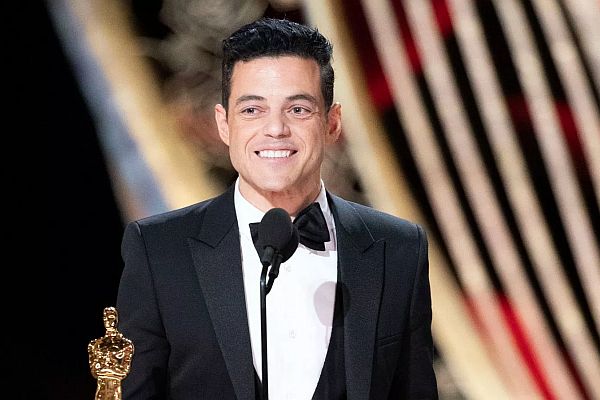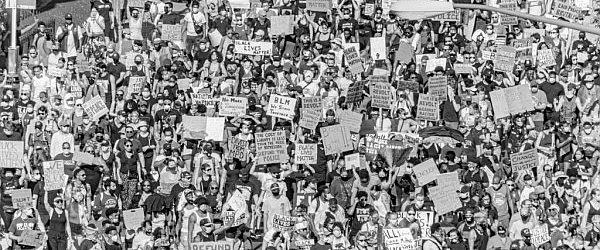Embracing one’s Arab identity is not straightforward.
Conversations surrounding Rami Malek’s Oscar win offer a glimpse of this. After he highlighted his Egyptian heritage in his acceptance speech, noting he is the son of immigrants, news outlets globally responded with headlines such as these:
Oscar winner Rami Malek: the first best actor of Arab heritage.
Rami Malek becomes first Arab-American to win best actor Oscar.
Arab glory as Rami Malek wins an Oscar.
What followed was community objection against the term Arab. Having been born and lived in Egypt myself, I understand the distress that can arise when Coptic Christians are lumped in under the Arab umbrella. For many Copts living in Egypt, the term represents occupation and erasure. This is, obviously, a legitimate concern. Whether to hold on to or to separate himself from an Arab identity had to be a conscious choice for Malek. While he has not rejected the term, he hasn’t outwardly or directly accepted it either. It is a nuanced and complex issue that he must navigate for himself.
Regardless of how he personally identifies, Malek has noted that he refuses to play roles that portray Arabs or Middle Eastern people in a negative light (that is, terrorists, criminals and assorted brutes). However, this came after a decent stint of peddling roles that caricatured Egyptians (a recurring Pharaoh character in Night at the Museum) or sustained harmful racial stereotypes (suicide bomber Marcos Al-Zacar in the television series 24).
I don’t blame him. Arabs working in creatives fields often have to rely on such cultural leverage. A lot of us don’t have the luxury of shedding our brown skin when in the pursuit of creative output and success. While not all of us dress up as Pharaohs or write ourselves in as terrorists, we use our identities in different ways.
At one end of the spectrum, we embrace our identity – and with that, negotiate its complexities – which can result in authentic and meaningful art. At the other, we’re only allowed access to the industry when a gatekeeper pulls out their diversity checklist.
In a study of the racialisation of Arab-Australians in the creative industries, researcher Sherene Idriss discussed how ethnic minority creative workers ‘live off as well as for their cultural difference’. Idriss spoke specifically in a community arts context, noting the experience of Hamid, one of the participants in the study:
… the broader framework of multiculturalism … encourages community arts workers to incorporate their ethnicity and location in Western Sydney into their art projects. Doing so can, first, challenge how parts of Western Sydney have become pathologised as dangerous and disadvantaged. But, second, Hamid, for example, feels he has to do this because there are few alternative ways in which he can establish a career as a writer, editor and actor in a highly competitive job market and where the opportunities presented to him make him feel uncomfortable – such as playing a drug dealer on television. Essentially then, he recognises that the figure of an ‘authentic’ migrant representative is a social construction that he plays with strategically to further his career.
Arabs, and artists of colour more broadly, rely greatly on cultural currency in our creative pursuits. While we can use it for good – to break harmful stereotypes or explore the nuances of our identities – we can also be left to swallow the ‘authentic migrant’ pill that is often our only feasible avenue for success.
As an immigrant to Australia, my developing identity is a constant wrestle between resentment and reliance. There are many aspects of my experience, particularly in my young life, that led me to resent being an Arab. The rules – there was one set for me, one set for my brother, and a whole other set for my white friends. The looks – when people heard my parents speak Arabic in public. The jokes – the typical gags about terrorism. But it is these same experiences that I now rely on to make headway.
I remember watching an episode of Inside the Actors Studio one stuffy afternoon while on school holidays. I was about fourteen years old, and it featured the cast of Family Guy. Alex Borstein – who voiced Lois in the show – was discussing how she began to use comedy as a child. She mentioned how she struggled with her body image and used comedy to overcome by cracking the jokes before the bullies could. ‘Here comes fatty!’ she would announce herself as she walked into a room. This was ground-breaking to me. So I adopted the trick.
I staged countless ‘Here comes your neighbourhood terrorist!’ moments. I look back on them today and cringe with shame and disgust. But at the time, to me, this was a strategy for survival. To make friends and keep them. To inoculate myself from insults to come. To show everyone I was cool, that I didn’t take myself too seriously. But in many ways, it has stuck.
Recently, I began teaching my very first creative writing class. The topic of the tutorial: ‘Why I Write’. Students were instructed to consider what drives them to write. I was asked the same question when I started university, and my answer hasn’t changed much since. Why do I write? Because I like writing about myself.
It sounds egotistical but my excuse is that it’s all I know. The only thing I am an expert on is me, so it makes sense that I write about me. I write about my identity, as an Arab, and as a Muslim. I write about my family and our stories of migration. I write about racism. I write about Islamophobia. I write about things I have experienced because that is what I know.
I wonder how many stories have been written, how many articles have been published, how many books have been sold, how many roles have been played by white people without a lifetime of knowledge behind their protagonists. A lot, I imagine. Yet I insist that all I can authentically write about is me. It is where I find success.
‘Here comes terrorist’ has evolved into ‘here comes Muslim Arab Egyptian woman.’ While this is less damaging, and more productive, I still base almost all of my work on being Arab. I cannot shake the compulsion to publicly claim my identity.
Both external and internal forces keep us in these cultural boxes. While often it’s a matter of waiting and working for a chance to break out, like Malek, a lot of the time it’s the anxiety of breaking away from our identity, and the fear of being seen as inauthentic in any other space.
Embracing our identities allows us to come from a place of understanding. But it can also be the safety blanket under which we risk suffocating ourselves.
Malek, to me, represents the potential for creative work to live and breathe separately from personal identity – something that writers from dominant cultures often take for granted. Yet I worry that this is simply a drop in a vast ocean of white people getting to write, play and be whoever they wish, while we stand watch on the sand bank of authenticity, knowing full well you can’t swim.



